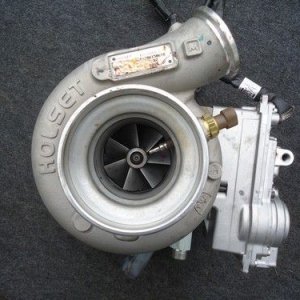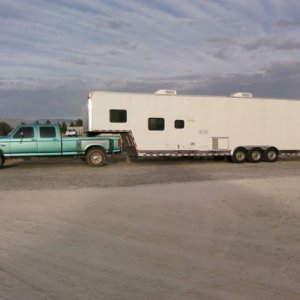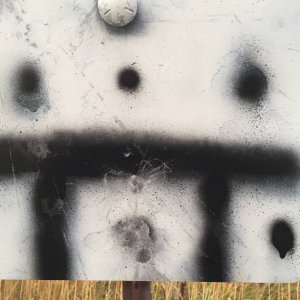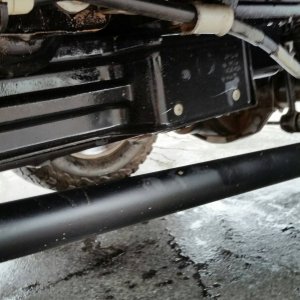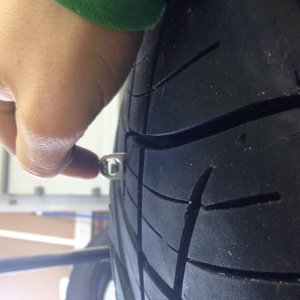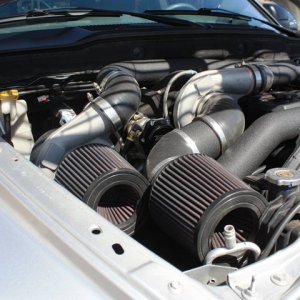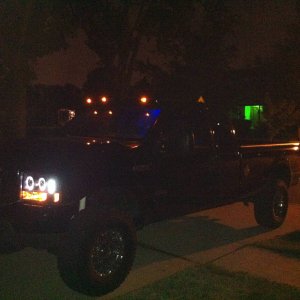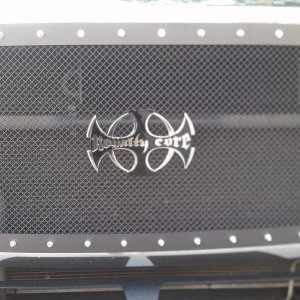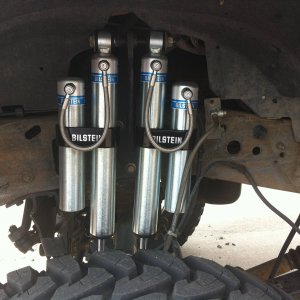Inspection and Verification
System Pre-Check
Note:
It is important that this procedure be performed first. Failure to do so may result in incorrect diagnosis of problem, wasted time, and improper replacement of components.
The System Pre-Check is used to screen a vehicle for relatively simple diagnostic repairs, such as loose connectors, blown fuses, etc. However, the System Pre-Check is also used to prepare the vehicle for further diagnostics. In addition, warning light concerns are dealt with in this check.
Note:
The anti-lock electronic control module (2C018) is commonly referred to as a RABS I module or on later models, the RABS II module. This repair procedure is written for REAR ABS II (RABS II) systems (as opposed to REAR ABS I (RABS I) systems). The RABS II system is standard for F-150, F-250, F-350 single and dual rear wheel vehicles. In the event that you are not sure if you have a RABS I or a RABS II system in your vehicle, check the anti-lock electronic control module part number. Anti-lock electronic control module part numbers will begin with either: F3TF-2C018- or F3UF-2C018-. All other part numbers should be considered to be a RABS I anti-lock electronic control module. If you have a RABS I anti-lock electronic control module, you must refer to the repair manual for that model year vehicle.
The RABS II uses both the red BRAKE and yellow REAR ABS instrument panel warning lights to alert the driver to a system malfunction. Both lights must be working properly to assist in concern diagnosis. The steps listed below must be followed prior to beginning the RABS II diagnostic procedure.
Vehicle Setup
WARNING:
PLACE BLOCKS BEHIND THE REAR WHEELS (1007) AND IN FRONT OF THE FRONT WHEELS TO PREVENT THE VEHICLE FROM MOVING WHILE THE SYSTEM PRE-CHECK IS BEING DONE.
For 4-wheel drive vehicles, shift into 2-wheel drive. Drive the vehicle to a level area, and place the shift lever in PARK for automatic transmissions (7003) and NEUTRAL for manual transmissions. Turn the ignition off, set the parking brake and turn on the running lamps. Place blocks behind the wheels.
Release the parking brake and continue to the System Pre-Check.
Warning Lamp Indicators
The red BRAKE warning light is constantly monitored by the anti-lock electronic control module. If the red light illuminates, the anti-lock electronic control module will disable the RABS II system and turn on the yellow RABS light. For this reason, diagnosing and resolving any base brake concerns illuminating the red BRAKE warning light will, in most cases, resolve a perceived RABS II concern.
Brake Light Self Check
The red BRAKE warning light is used to indicate a low fluid level condition or parking brake applied condition. To check this light, insert the key in the ignition switch (11572) and turn it to the START position. The light should glow in this position. If it fails to glow, go to the Symptom Chart.
Allow the key to spring back from the START position to the RUN position. At this time the BRAKE warning light should turn off. If it does not turn off, recheck the parking brake to make sure that it is fully disengaged. In the event that the BRAKE warning light remains on, go to the Symptom Chart.
Rear Anti-Lock Warning Light
The yellow REAR ABS warning light is used to indicate a malfunction and a deactivation of the RABS II system. To check this light, first follow the procedure above for Red Brake Warning Light Self-Check, and allow the key to spring back from START position to the RUN position. The yellow REAR ABS warning light should perform a self-check by glowing for approximately two seconds and then turning off. If it turns back on and does not flash, then a system concern has been detected. Refer to On-Board Diagnostics, Diagnostic Trouble Codes, Retrieving. If it fails to glow, go to the Symptom Chart.
On-Board Diagnostics
Diagnostic Trouble Codes, Retrieving
CAUTION:
Care must be taken to connect only the black/orange stripe wire to ground. Connecting the red mating connector wire to ground will result in a blown fuse.
Verify the key is in the RUN position (engine does not need to be running). Next, locate the black RABS II diagnostic connector. The diagnostic connector has two mating halves (one of which has a black/orange wire connected to it). Disconnect the two halves.
Attach one end of a jumper wire to the black with orange stripe wire side of the diagnostic connector. Momentarily ground the other end of the jumper wire by connecting it to a good chassis ground for 1-2 seconds. Grounding this wire should start the yellow REAR ABS warning light flashing. If grounding this wire does not start the yellow REAR ABS warning light flashing, go to the Symptom Chart.
The code consists of a number of short flashes and ends with a long flash. Count the short flashes and include the following long flash in the count to obtain the code number. For example, three short flashes followed by one long flash indicates diagnostic trouble Code 4. The code will continue to repeat itself until the key is turned off. It is recommended that the code be verified by reading it several times. This code will be used later for system repair instructions. It should be written down for future use. Diagnostic trouble code 16 indicates that the anti-lock electronic control module detects normal system operation.
Diagnostic Trouble Codes, Erasing
The last step of the System Pre-Check always includes clearing the Keep-Alive Memory (KAM). To do this, simply turn off the ignition while the diagnostic connector halves are separated as described in the procedures for obtaining the diagnostic trouble code above, after which the diagnostic connector should be reassembled to provide KAM power to the anti-lock electronic control module. If at this time a valid code has been obtained, go to the appropriate pinpoint test for that code.

